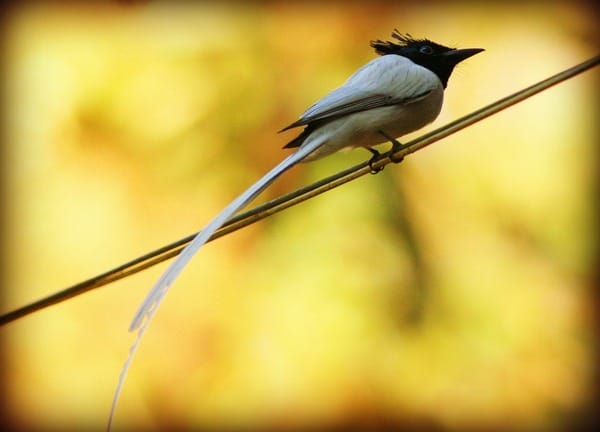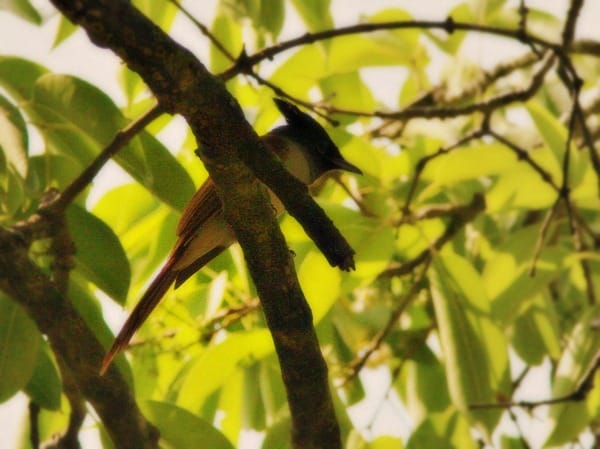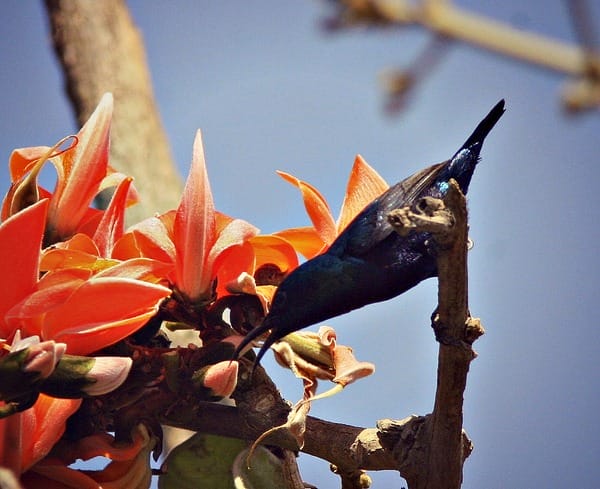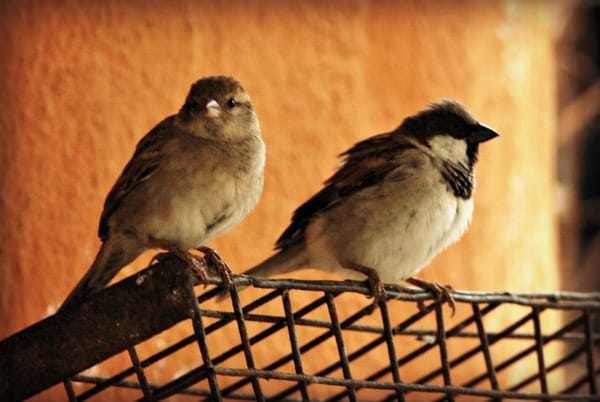Gender roles in our society is a much debated topic. How do other living beings handle this? Let’s take birds as an example.
It seems to be the general rule (with a few exceptions, of course) that the female of the species is always duller, and less brightly coloured than the male. Here’s a beautiful bird that can often be seen in Lalbagh…. the male Asian Paradise Flycatcher.

Male Asian Paradise Flycatcher. Pic: Deepa Mohan
As you can see, this is a spectacular bird, and it definitely catches the attention of the observer as it flies around, flaunting that ribbon of a tail! But here’s the far less dressy lady:

Female Asian Paradise Flycatcher. Pic: Deepa Mohan
We can see similar differences in another very colourful, and very common bird (look for them in all the gardens in your locality)…here are the bright colours of the male Purple-rumped Sunbird

Male Purple-rumped Sunbird. Pic: Deepa Mohan
and his much duller mate:

Female Purple-rumped Sunbird. Pic: Deepa Mohan
Perhaps you may not have noticed these two birds…but here’s a bird that’s making a strong comeback after once being very common in our city and then almost disappearing…the House Sparrow. Here are both the male and female, together.

Male and Female House Sparrow. Pic: Deepa Mohan
The only exception to this, in the common birds of our city, is the Asian Koel, where the male is black, and the female is mottled black-and-white.
There are several theories as to the reasons for this; one is that the females prefer to look at bright plumage on the males rather than on themselves (contrast this with human beings!). Another is that when the females are flying to and from the nest, their dull feathers make it more difficult for predators to see them and raid the nests. There is also the school of thought that the brightness of the colours indicates, to both other males, and to the females, the health and vitality of the male, so that the offspring may be healthier, and better able to survive.
So, in the bird world, the ladies prefer not to be highly coloured, and leave the fashion and the flaunting to their menfolk!⊕